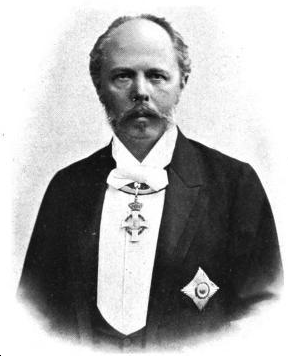|
Radebeul-Weintraube Station
Radebeul-Weintraube station is in Radebeul in the German state of Saxony. It is classified by Deutsche Bahn as a ''Haltepunkt'' (“halt”, that is it has no sets of points). Weintraube (“bunch of grapes”) station was opened in 1838 in the Lößnitz fields (the banks of the Elbe downstream from Dresden) as the first station out of Dresden on Germany's oldest long-distance railway, the Leipzig–Dresden railway. It is now the oldest station still regularly served in Saxony. History Construction of the Leipzig–Dresden railway was begun from both ends simultaneously and it was opened in stages between 1837 and 1839. The 8.18 km long section from Dresden-Neustadt to Weintraube was opened on 19 July 1838. The current Radebeul-Weintraube station was opened near the royal estate of Hoflößnitz as the first station on the line from Dresden and the first station in the borders of the modern town of Radebeul. It was named ''Weintraube'' after the name of the nearby viney ... [...More Info...] [...Related Items...] OR: [Wikipedia] [Google] [Baidu] |
Radebeul
Radebeul ( hsb, Radobyle) is a town (''große Kreisstadt'') in the Elbe valley in the district of Meißen (district), Meißen in Saxony, Germany, a suburb of Dresden. It is well known for its viticulture, a museum dedicated to writer Karl May, and a narrow gauge railway connecting Radebeul with the castle of Moritzburg, Saxony, Moritzburg and the town of Radeburg. The Meißen area, where Radebeul is located, is one of the northeasternmost areas where wine is grown in the 21st century. It is sometimes called the "Nice of Saxony" for its pleasant landscape and mild climate. History A village Radebeul was first mentioned in 1349. In 1905 it absorbed the neighboring village of Serkowitz. On April 1, 1924 Radebeul became a town. Meanwhile, the neighboring village of Kötzschenbroda had taken over Lindenau in 1920, and Naundorf, Zitzschewig und Niederlößnitz by 1924, when it was made a town as well. In 1934 Wahnsdorf and Oberlößnitz joined Radebeul, and on January 1, 1935 ... [...More Info...] [...Related Items...] OR: [Wikipedia] [Google] [Baidu] |
Niederau
Niederau is a municipality in the district of Meißen, in Saxony, Germany. Niederau station is located on the Leipzig–Dresden railway, which also used to have Oberau Tunnel The Oberau Tunnel (''Oberauer Tunnel'') was the second railway tunnel in Germany after a railway tunnel on the Tollwitz–Dürrenberg Railway (''Tollwitz-Dürrenberger Eisenbahn'', a 585 mm gauge mining railway), but it was the first tunne ... until 1933, which was located within today's municipality Niederau. References Meissen (district) {{Meissen-geo-stub ... [...More Info...] [...Related Items...] OR: [Wikipedia] [Google] [Baidu] |
Railway Stations In Radebeul
Rail transport (also known as train transport) is a means of transport that transfers passengers and goods on wheeled vehicles running on rails, which are incorporated in tracks. In contrast to road transport, where the vehicles run on a prepared flat surface, rail vehicles (rolling stock) are directionally guided by the tracks on which they run. Tracks usually consist of steel rails, installed on sleepers (ties) set in ballast, on which the rolling stock, usually fitted with metal wheels, moves. Other variations are also possible, such as "slab track", in which the rails are fastened to a concrete foundation resting on a prepared subsurface. Rolling stock in a rail transport system generally encounters lower frictional resistance than rubber-tyred road vehicles, so passenger and freight cars (carriages and wagons) can be coupled into longer trains. The operation is carried out by a railway company, providing transport between train stations or freight customer facili ... [...More Info...] [...Related Items...] OR: [Wikipedia] [Google] [Baidu] |
Radebeul Haltepunkt Radebeul-Weintraube
Radebeul ( hsb, Radobyle) is a town (''große Kreisstadt'') in the Elbe valley in the district of Meißen in Saxony, Germany, a suburb of Dresden. It is well known for its viticulture, a museum dedicated to writer Karl May, and a narrow gauge railway connecting Radebeul with the castle of Moritzburg and the town of Radeburg. The Meißen area, where Radebeul is located, is one of the northeasternmost areas where wine is grown in the 21st century. It is sometimes called the "Nice of Saxony" for its pleasant landscape and mild climate. History A village Radebeul was first mentioned in 1349. In 1905 it absorbed the neighboring village of Serkowitz. On April 1, 1924 Radebeul became a town. Meanwhile, the neighboring village of Kötzschenbroda had taken over Lindenau in 1920, and Naundorf, Zitzschewig und Niederlößnitz by 1924, when it was made a town as well. In 1934 Wahnsdorf and Oberlößnitz joined Radebeul, and on January 1, 1935 the towns of Kötzschenbroda a ... [...More Info...] [...Related Items...] OR: [Wikipedia] [Google] [Baidu] |
Dresden S-Bahn
The Dresden S-Bahn is a network of S-Bahn-type commuter train services in Dresden and the surrounding area. It is commissioned by Verkehrsverbund Oberelbe (VVO) from DB Regio ''Verkehrsbetrieb Südostsachsen'' and currently consists of three services operating over a network. The S-Bahn fare structure was introduced on a series of suburban railway lines on 29 September 1974. The term "S-Bahn" has only officially been used for the system since 31 May 1992. Since 24 May 1998, VVO fares have been valid for the S-Bahn Dresden. Outside of Dresden, it runs to the centres of Freital, Meissen, Pirna, Radebeul and since 9 December 2007 also to Freiberg. All lines stop at Dresden Hauptbahnhof. According to data from the Deutsche Bahn, the Dresden S-Bahn is the S-Bahn with the highest customer satisfaction in Germany.Deutsche Bahn AG (Hrsg.): Rolling stock Services are operated by double-deck-push–pull trains. All trains have 1st and 2nd. class. As with othe ... [...More Info...] [...Related Items...] OR: [Wikipedia] [Google] [Baidu] |
5 Ft And 1520 Mm Gauge Railways
Railways with a railway track gauge of first appeared in the United Kingdom and the United States. This gauge became commonly known as Russian gauge because the government of the Russian Empire later chose it in 1843 — former areas of the Empire have inherited this standard. In 1970 Soviet Railways re-defined the gauge as 1,520 mm (). With about of track, Russian gauge is the second-most common gauge in the world, after . History Great Britain, 1748 In 1748, the Wylam waggonway was built to a gauge for the shipment of coal from Wylam to Lemington down the River Tyne. In 1839, the Eastern Counties Railway was constructed; and in 1840, the Northern and Eastern Railway was built. In 1844, both lines were converted to . In 1903, the East Hill Cliff Railway, a funicular, was opened. United States, 1827 In 1827, Horatio Allen, the chief engineer of the South Carolina Canal and Rail Road Company, prescribed the usage of gauge and many other railroads in Southe ... [...More Info...] [...Related Items...] OR: [Wikipedia] [Google] [Baidu] |
Soviet Union
The Soviet Union,. officially the Union of Soviet Socialist Republics. (USSR),. was a transcontinental country that spanned much of Eurasia from 1922 to 1991. A flagship communist state, it was nominally a federal union of fifteen national republics; in practice, both its government and its economy were highly centralized until its final years. It was a one-party state governed by the Communist Party of the Soviet Union, with the city of Moscow serving as its capital as well as that of its largest and most populous republic: the Russian SFSR. Other major cities included Leningrad (Russian SFSR), Kiev (Ukrainian SSR), Minsk ( Byelorussian SSR), Tashkent (Uzbek SSR), Alma-Ata (Kazakh SSR), and Novosibirsk (Russian SFSR). It was the largest country in the world, covering over and spanning eleven time zones. The country's roots lay in the October Revolution of 1917, when the Bolsheviks, under the leadership of Vladimir Lenin, overthrew the Russian Provisional Government ... [...More Info...] [...Related Items...] OR: [Wikipedia] [Google] [Baidu] |
War Reparations
War reparations are compensation payments made after a war by one side to the other. They are intended to cover damage or injury inflicted during a war. History Making one party pay a war indemnity is a common practice with a long history. Rome imposed large indemnities on Carthage after the First (Treaty of Lutatius) and Second Punic Wars. Some war reparations induced changes in monetary policy. For example, the French payment following the Franco-Prussian war played a major role in Germany's decision to adopt the gold standard; the 230 million silver taels in reparations imposed on defeated China after the First Sino-Japanese War led Japan to a similar decision. There have been attempts to codify reparations both in the Statutes of the International Criminal Court and the UN Basic Principles on the Right to a Remedy and Reparation for Victims, and some scholars have argued that individuals should have a right to seek compensation for wrongs they sustained during warfare ... [...More Info...] [...Related Items...] OR: [Wikipedia] [Google] [Baidu] |
Ernst Von Schuch
Ernst Edler von Schuch, born Ernst Gottfried Schuch (23 November 1846, Graz – 10 May 1914, Niederlößnitz/Radebeul Dresden) was an Austrian conductor who became famous through his working collaborations with Richard Strauss at the Dresden Court Opera. Schuch first studied law but then turned to music, trained at first by E. Stolz. He studied in Graz and later in Vienna, briefly with Felix Otto Dessoff, and started his conducting career in 1867 as Kapellmeister at Lobe's Theatre in Breslau while the Breslau Opera was out of action following a fire. Coincidentally, a father and son with the same family name Schuch had built and run the first opera theatre in Breslau 120 years earlier:North German Opera in the Age of Goethe - Page 83 Thomas Bauman - 1985 "Breslau in Silesia offered German companies an attractive alternative to Leipzig or Berlin. Like them, it could support a company from autumn ... the charming name Theater on the Cold Ashes. Schuch brought the first Hiller ... [...More Info...] [...Related Items...] OR: [Wikipedia] [Google] [Baidu] |
Radebeul Ost Station
Radebeul Ost (east) station is a station in the Große Kreisstadt of Radebeul in the German state of Saxony. It is in the suburb now called Radebeul-Ost. The station buildings are located within the boundaries of ''Alt-Radebeul'' (old Radebeul) on Sidonienstraße. The station is on the Dresden S-Bahn network. The station is now divided between the heritage-listed station area on the Dresden S-Bahn, the terminal station of the narrow-gauge Radebeul–Radeburg railway (''Lößnitzgrundbahn'') and its associated facilities, the old goods shed, the narrow-gauge railway museum and the former station building, which is no longer used for rail purposes but is instead operated as the ''Radebeuler Kultur-Bahnhof'' (“Radebeul Culture Station”), including an events hall, a library located in the west wing (former waiting room) since 2002 and the adult education college of Meissen district (''Volkshochschule im Landkreis Meißen'') located in the east wing since 2013. In addition to the ... [...More Info...] [...Related Items...] OR: [Wikipedia] [Google] [Baidu] |
Radebeul-Kötzschenbroda Station
The Radebeul-Kötzschenbroda station is in Kötzschenbroda, a district of Radebeul in the German state of Saxony. It is classified by Deutsche Bahn as a ''Haltepunkt'' (“halt”, that is it has no sets of points). It is located on the Pirna–Coswig railway, which was recently created as a separate line as part of the upgrade of the Leipzig–Dresden railway. The station, which was previous called ''Radebeul West'', was rebuilt and renamed ''Radebeul-Kötzschenbroda'' in 2013 and it is now served mainly by the Dresden S-Bahn. Description In order to modernise Kötzschenbroda station, which was opened by the Royal Saxon State Railways in 1840, work began on 11 March 1895 on the building of a new station building in Kötzschenbroda in the district of Lößnitz. The new station, consisting of an entrance and terminal building, a waiting hall, platform roofs and a railway workers' residence, was completed on 15 February 1896 and inaugurated on 16 June 1896. The for ... [...More Info...] [...Related Items...] OR: [Wikipedia] [Google] [Baidu] |







